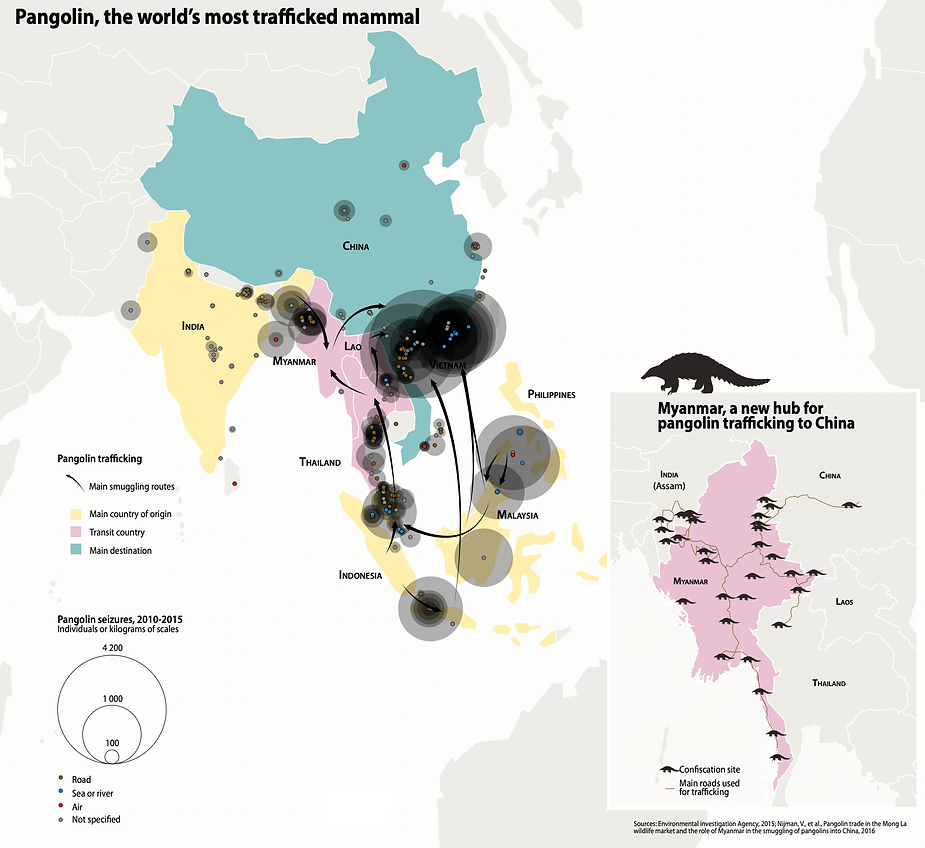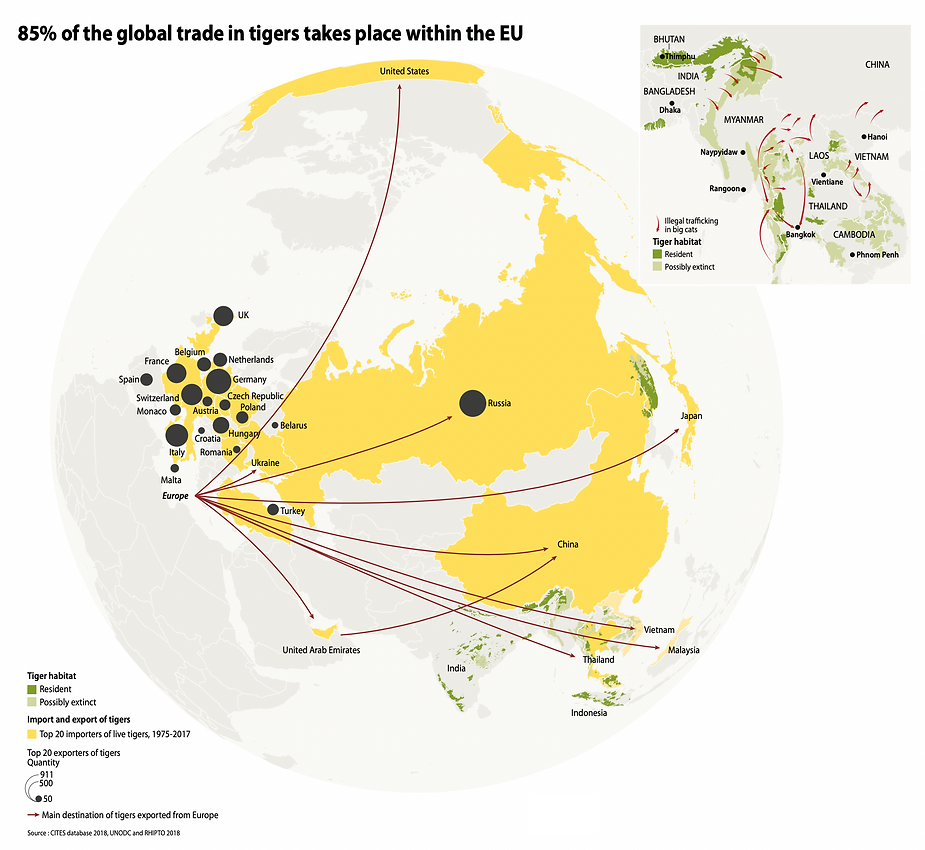In our previous One is Not Enough series, we discovered some of the illegal trade routes around the world. Today, let’s look at some illicit activities in these trade routes, particularly wildlife.
In the quiet depths of the world’s forests, the vast expanse of the savannah, and the uncharted waters of our oceans, a sinister and shadowy trade thrives, threatening the very existence of our planet’s most precious inhabitants. Illicit wildlife trading, often cloaked in secrecy and driven by greed, is a stark indictment of human actions, reflecting the depths to which some will exploit our planet’s biodiversity for financial gain.
Illicit wildlife trading poses a multifaceted threat, weaving its insidious threads through the fabric of our global environment, society, and economy. From the environmental perspective, it accelerates the depletion of endangered species, disrupts fragile ecosystems, and fuels the vicious cycle of poaching and habitat destruction. Moreover, it jeopardizes the health and well-being of humanity by serving as a breeding ground for zoonotic diseases and undermining global efforts to conserve biodiversity.
Let’s look at some of the most trafficked animals and animal parts in the illegal wildlife trade:
Pangolins
Hunting pangolins has increased by over 150% since 2000, making the pangolin one of the world’s most trafficked animals in the illegal wildlife trade. It is estimated that at least a million pangolins were traded in Asia in 10 years. They are highly trafficked for their scales, which are used in traditional medicine, and their meat, which is considered a delicacy in some countries. All eight pangolin species are at risk, with some facing a high risk of extinction.

Elephants
Poached African ivory may fetch an end-user street value in Asia of an estimated US$165–188 million of raw ivory per year, and this figure does not include ivory from Asian sources. Ivory provides a portion of the income raised by militia groups in the DRC and CAR and is most likely a primary source of income for the Lord’s Resistance Army, which currently operates in the border triangle of South Sudan, CAR, and DRC. Ivory also provides a source of income to the Sudanese Janjaweed and other horseback gangs operating across Sudan, Chad, and Niger.
Rhinos
Poaching of rhino horn involves organized syndicates. Rhinos have disappeared entirely from several Southeast Asian and African countries recently. The value of rhino horn poached in 2013 was valued in downstream markets at between US$63.8 million and US$192 million, but the value is much less at the supply end of the chain.

Tigers
Tigers are poached for their skins, bones, and other body parts, which are believed to have medicinal and aphrodisiac properties in traditional Asian medicine. Tiger populations have significantly declined due to poaching and habitat loss. There were 111 direct exports of tigers from the EU between 2013 and 2017, 103 of which were live tigers, and a total of 165 EU tiger re-exports, 84 of which were live tigers. Online reports have highlighted deficiencies in regulations and monitoring of captive tigers in the EU and UK. Inspection frequency is low, and the procedures for handling dead tigers lack strong government oversight. Private individuals and circuses can keep tigers in some countries, leaving loopholes that need addressing at both national and EU levels to prevent tigers and their parts from entering the illegal wildlife trade.
Fish
Illegal fishing off West Africa is a significant concern due to its impact on local fishermen’s livelihoods. This practice, illegal, unreported, and unregulated (IUU) fishing, accounts for a significant portion of the total catch, valued at $2.3 billion in 2015. In Somalia, IUU fishing has been linked to the rise in piracy, resulting in losses estimated between $100 million and $300 million incurred by foreign illegal vessels. Senegal also suffers from IUU fishing, with annual losses of around $300 million in 2012, equivalent to 2% of GDP. Some vessels transfer illegal catches to others at sea. While IUU fishing plays a limited role in threat finance, it is notable for facilitating the transportation of drugs and foreign fighters, including across various regions like the Caspian, the Mediterranean Sea, the Horn of Africa, and Yemen.
Next time, watch out for potential shipping red flag indicators and perform thorough end-use checks during export control transactions to remain compliant!



